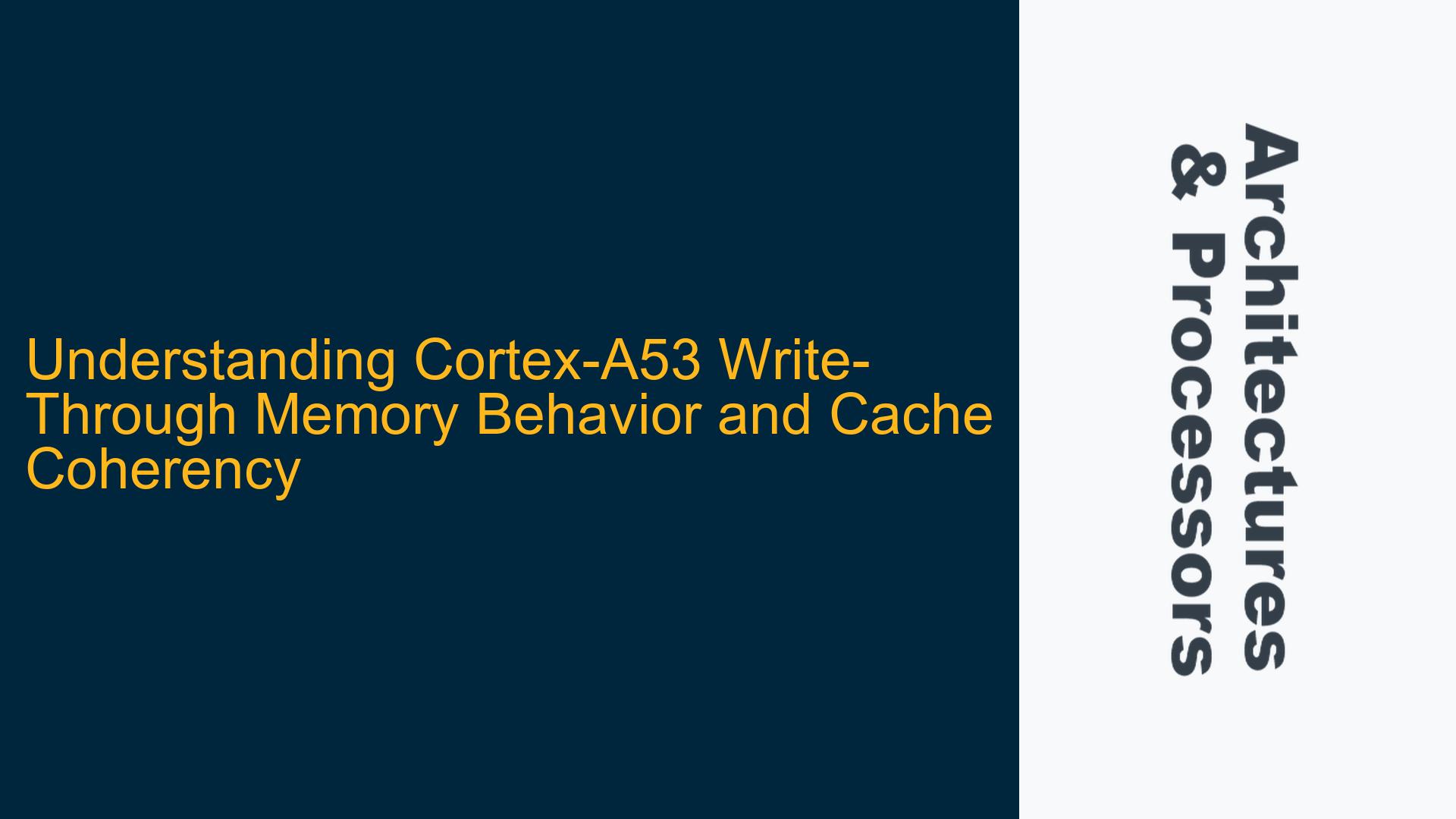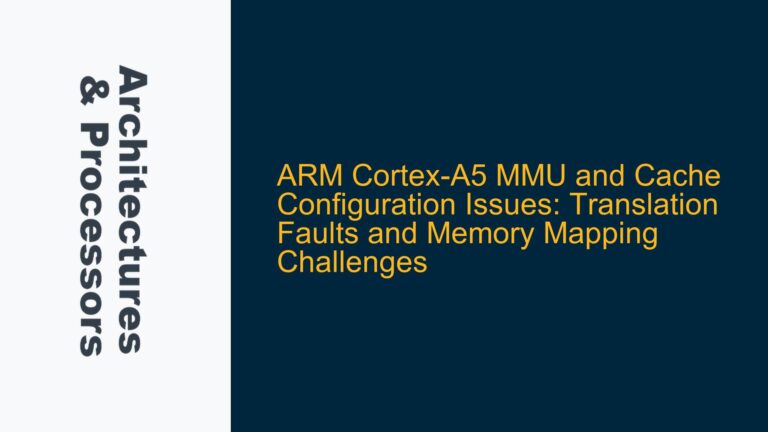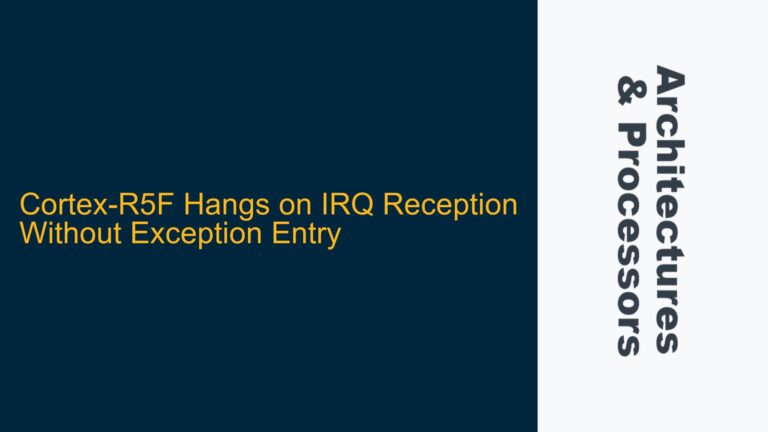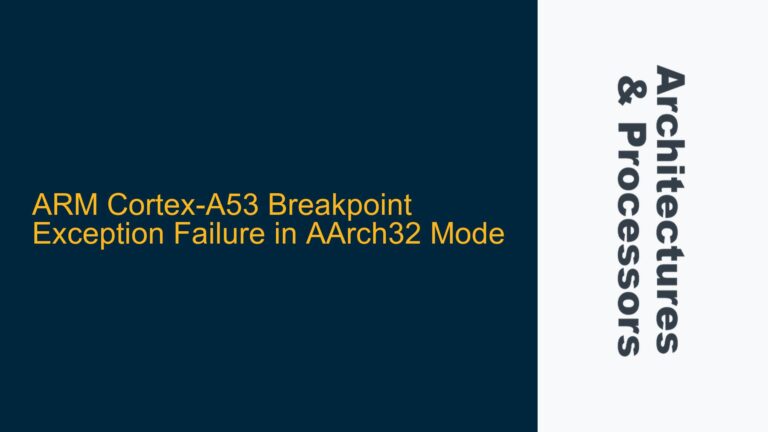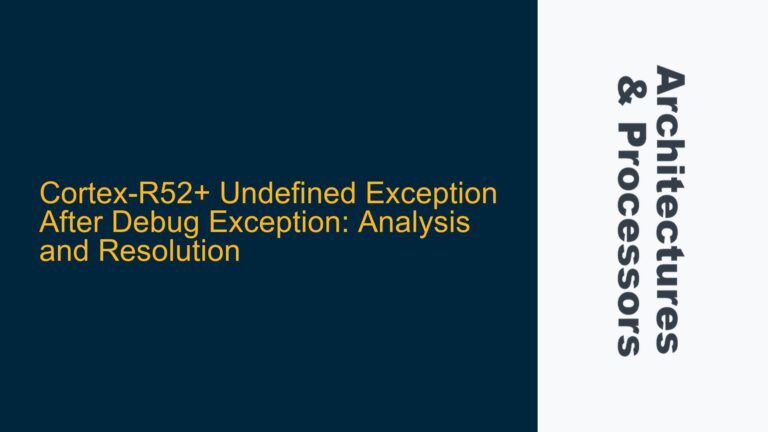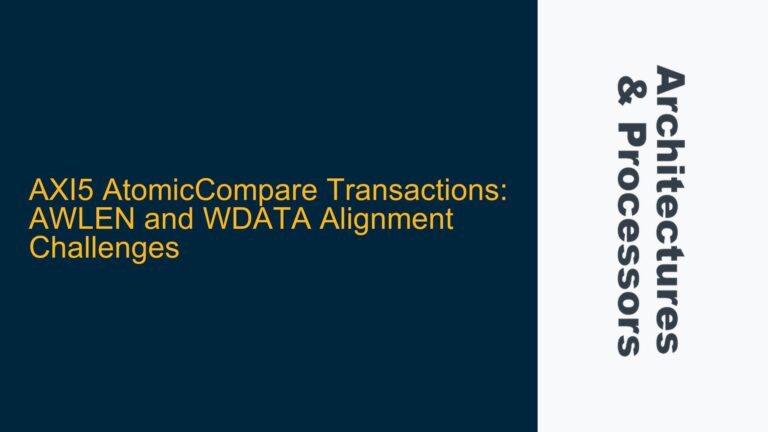Cortex-A53 Write-Through Memory Downgraded to Non-Cacheable
The Cortex-A53 processor, a widely used ARMv8-A core, simplifies its coherency logic by treating memory regions marked as Inner Write-Through (WT) or Outer Write-Through as non-cacheable. This behavior is a design choice to reduce the complexity of cache coherency management, particularly in systems with multiple cores or when dealing with Direct Memory Access (DMA) transactions. Write-Through memory is a type of cache policy where every write operation updates both the cache and the main memory simultaneously. While this ensures data consistency between the cache and main memory, it introduces additional overhead due to the frequent memory updates.
In the Cortex-A53, when a memory region is marked as Write-Through, the processor downgrades it to non-cacheable. This means that any access to such memory regions bypasses the cache entirely, ensuring that all reads and writes go directly to the main memory. This approach eliminates the need for complex cache coherency mechanisms, such as snooping or cache invalidation, which would otherwise be required to maintain consistency between the cache and main memory in a Write-Through scenario.
The downgrade to non-cacheable memory has significant implications for system performance and behavior. For instance, it can lead to increased memory access latency since every access must go directly to the main memory rather than being served from the faster cache. Additionally, it affects how software interacts with hardware, particularly in scenarios involving DMA or multi-core processing, where cache coherency is critical.
Memory Attribute Configuration and Cache Policy Mismatch
The Cortex-A53’s behavior of downgrading Write-Through memory to non-cacheable can be traced back to the way memory attributes are configured and interpreted by the processor. In ARM architectures, memory attributes are defined in the Memory Management Unit (MMU) through the Translation Table Descriptors. These descriptors specify properties such as cacheability, shareability, and memory type (e.g., Normal, Device, or Strongly Ordered).
When a memory region is marked as Write-Through, it implies that the cache should maintain a copy of the data while ensuring that every write operation updates the main memory. However, implementing Write-Through caching requires additional hardware logic to manage the coherency between the cache and main memory. To simplify this, the Cortex-A53 opts to treat such regions as non-cacheable, effectively bypassing the cache altogether.
This behavior can lead to a mismatch between the intended cache policy and the actual behavior of the system. For example, if software assumes that a Write-Through memory region will benefit from caching, it may experience unexpected performance degradation due to the downgrade to non-cacheable memory. This mismatch is particularly problematic in systems where DMA or multi-core processing is involved, as it can lead to data inconsistencies or coherency issues.
Furthermore, the Cortex-A53’s approach to handling Write-Through memory can interact poorly with other system components, such as DMA controllers or other processors, which may expect cacheable memory behavior. This can result in subtle bugs or performance bottlenecks that are difficult to diagnose without a deep understanding of the processor’s memory handling mechanisms.
Implementing Proper Memory Barriers and Cache Management
To address the issues arising from the Cortex-A53’s handling of Write-Through memory, developers must implement proper memory barriers and cache management techniques. Memory barriers, also known as synchronization barriers, ensure that memory operations are performed in the correct order, preventing issues such as data races or coherency violations. In the context of Write-Through memory, memory barriers can help ensure that all writes to non-cacheable memory are completed before subsequent operations are executed.
One effective approach is to use Data Synchronization Barriers (DSBs) and Data Memory Barriers (DMBs) in the ARM architecture. These instructions enforce ordering constraints on memory accesses, ensuring that all previous memory operations are completed before proceeding. For example, a DSB instruction can be used to ensure that all writes to a Write-Through memory region are completed before any subsequent reads or writes are performed.
In addition to memory barriers, developers must also manage the cache explicitly when dealing with non-cacheable memory regions. This involves invalidating or cleaning the cache to ensure that it does not contain stale data that could lead to inconsistencies. For instance, before performing a DMA transfer to or from a non-cacheable memory region, the cache should be invalidated to ensure that the DMA controller accesses the most up-to-date data in main memory.
Another important consideration is the configuration of the MMU and memory attributes. Developers should carefully review the memory attribute settings in the Translation Table Descriptors to ensure that they align with the intended behavior of the system. If Write-Through memory is required, but the Cortex-A53’s downgrade to non-cacheable is causing issues, alternative approaches such as using Write-Back memory with explicit cache management may be necessary.
Finally, developers should consider the impact of the Cortex-A53’s memory handling on system performance. Since non-cacheable memory accesses are slower than cacheable ones, it may be beneficial to minimize the use of Write-Through memory regions or to optimize the software to reduce the frequency of accesses to such regions. This can involve techniques such as batching memory operations or using alternative cache policies that better suit the system’s requirements.
In conclusion, the Cortex-A53’s handling of Write-Through memory by downgrading it to non-cacheable is a design choice that simplifies cache coherency logic but introduces challenges for system performance and behavior. By understanding the underlying mechanisms and implementing proper memory barriers and cache management techniques, developers can mitigate these challenges and ensure reliable and efficient system operation.
